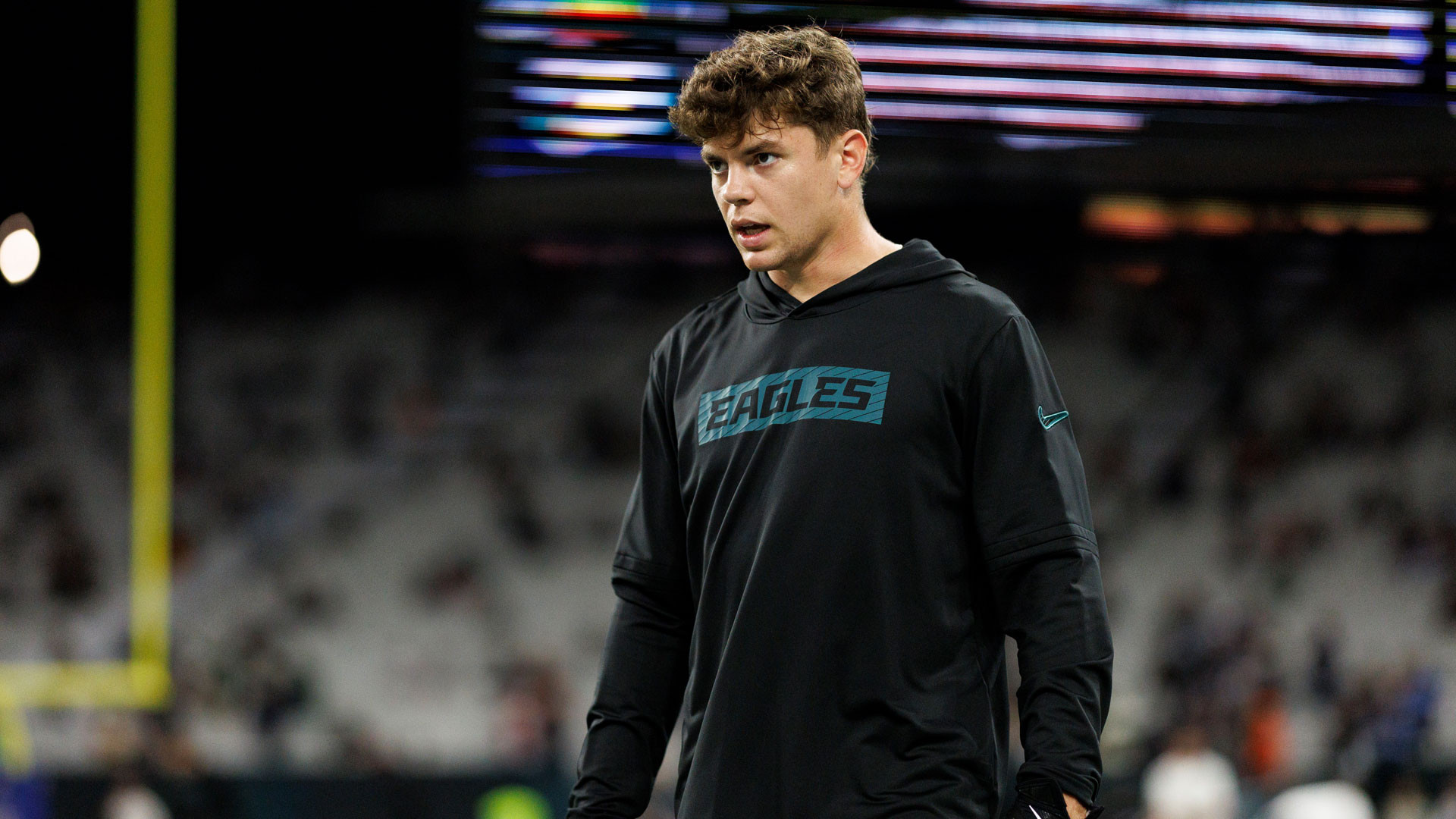Are you curious about the financial side of professional football? Discover the average NFL player salary, top earners, and factors influencing their income. CAUHOI2025.UK.COM provides comprehensive insights into NFL player compensation.
Professional football, especially in the National Football League (NFL), is often associated with lucrative contracts and high-profile endorsements. While some players achieve immense wealth, the financial reality for the average player is more nuanced. Understanding the average salary, factors influencing pay, and financial challenges players face offers a comprehensive view of the economics of professional football. Let’s explore how much the average professional football player makes and the complexities surrounding their earnings.
1. Understanding the Average NFL Salary
1.1. The Reported Average
The average NFL salary is a figure often cited but can be misleading without context. According to reports following the 2017 regular season, the average NFL salary was around $2.7 million, as reported by the Los Angeles Times. Considering the NFL Players Association negotiated a new collective bargaining agreement (CBA) since then, this figure has likely increased.
1.2. Impact of the Collective Bargaining Agreement (CBA)
The CBA significantly influences player salaries, setting minimum salaries and revenue-sharing agreements between the owners and the players. The current CBA, ratified in 2020, has provisions that impact not only the average salary but also benefits, pensions, and healthcare.
1.3. Factors Affecting Average Salary Calculations
Several factors affect the calculation of the average salary, including:
- Inclusion of all players: The average can be skewed by including both high-earning superstars and lower-paid rookies.
- Contract types: Guaranteed money versus non-guaranteed money in contracts affects the real value players receive.
- Roster sizes: The number of players on active and inactive rosters impacts the distribution of salaries.
2. Highest Paid NFL Positions
2.1. Quarterbacks: The Top Earners
Quarterbacks (QBs) are consistently the highest-paid players in the NFL. Their pivotal role in the team’s success commands top dollar. In 2022, the average salary for quarterbacks was over $7 million, according to Spotrac.
2.2. The Gap Between Quarterbacks and Other Positions
The financial gap between quarterbacks and other positions is substantial. For example, wide receivers, the next closest position in terms of average salary, earned around $2.8 million on average in 2022. This disparity highlights the premium placed on effective quarterback play.
2.3. Top-Tier Quarterback Salaries
When considering the top 10 quarterbacks, the average salary jumps to $49.4 million, compared to $24.8 million for the top 10 wide receivers. This elite group of quarterbacks sets the standard for earnings in the NFL.
3. Lowest Paid NFL Positions
3.1. Special Teams: The Bottom of the Leaderboard
Special teams players, including kickers, punters, and long snappers, typically occupy the lowest-paid positions. Their average salary in 2022 was around $2.775 million, according to Spotrac.
3.2. Running Backs: A Surprising Underpayment
Running backs are often surprisingly low on the salary scale, averaging just under $2 million. Factors contributing to this include:
- High turnover rate: Injuries and burnout lead to shorter careers.
- Devaluation of the position: Some teams believe running back talent is more readily replaceable.
3.3. Impact of Position on Career Longevity
The physical demands of certain positions, like running back, often result in shorter careers, affecting their long-term earning potential.
4. Highest Paid NFL Player
4.1. Aaron Rodgers: The Top Earner in 2022
In 2022, Aaron Rodgers topped the list of highest-paid NFL players, earning $50.3 million. His performance, experience, and marketability contributed to his substantial salary.
4.2. Other Top-Paid Players
Other top-paid players in 2022 included:
- Kyler Murray: $46.1 million
- Deshaun Watson: $46 million
- Patrick Mahomes: $45 million
- Josh Allen: $43 million
4.3. Trends in Top Salaries
A consistent trend among the highest-paid players is that quarterbacks dominate the list. This reflects the critical importance of the quarterback position in the NFL.
5. Minimum NFL Salaries
5.1. Minimum Salaries Based on Experience
The NFL’s collective bargaining agreement sets minimum salaries based on a player’s years of experience. These minimums provide a baseline for player compensation.
5.2. 2022 Minimum Salary Table
The minimum salaries for the 2022 season, according to the CBA, are as follows:
| Years of Experience | Minimum Salary (Active/Inactive) | Minimum Salary (Non-Active/Inactive) |
|---|---|---|
| 0 | $705,000 | $430,000 |
| 1 | $825,000 | $455,000 |
| 2 | $895,000 | $480,000 |
| 3 | $965,000 | $505,000 |
| 4-6 | $1,035,000 | $530,000 |
| 7+ | $1,120,000 | $580,000 |
5.3. Practice Squad Payments
Practice squad players also receive weekly payments, which vary based on their qualifications:
- Fixed Rate: $11,500 per week
- Minimum Payment: $15,400 per week
- Maximum Payment: $19,900 per week
6. How NFL Rookies Get Paid
6.1. Rookie Minimum Salary
Rookies drafted into the NFL receive a minimum salary, which was $705,000 in 2022. This figure is set to increase annually through 2030, reaching $1,065,000.
6.2. Signing Bonuses
In addition to their base salary, rookies often receive signing bonuses, which can significantly increase their total compensation.
6.3. First-Round Pick Contracts
First-round draft picks typically receive the most lucrative rookie contracts. For example, in the 2022 NFL Draft, all 32 first-round picks agreed to four-year contracts greater than $10 million.
7. Fifth-Year Options in the NFL
7.1. Availability for First-Round Picks
NFL rookie contracts generally run for four years, with a fifth-year option available exclusively to first-round draft picks.
7.2. Renegotiating Contracts
After a player’s third season, teams can renegotiate the contract and agree to terms for a fifth year.
7.3. Factors Influencing Fifth-Year Salary
Several factors determine the fifth-year salary level, including:
- Pro Bowl selections
- Percentage of snaps played
8. NFL Pension Plan
8.1. Eligibility Requirements
Prior to 2020, players needed four accrued seasons to be eligible for the NFL pension plan. The new CBA reduced this requirement to three seasons.
8.2. Average Pension Payments
The CBA also increased total pension payments from an average of $30,000 per year to $46,000 per year.
8.3. Age of Retirement
Players are eligible to receive pension funds at age 55.
8.4. Additional Benefits
The CBA outlines a 25% increase in Medicare supplement benefit to players over 65 and a plan to establish a program that guarantees former players without insurance receive mental health services, orthopedic care, preventative care and other health interventions at no cost to the player.
9. Financial Challenges for NFL Players
9.1. Bankruptcy Rates
Despite high salaries, many NFL players face financial difficulties after retirement. A 2015 study by the National Bureau of Economic Research found that approximately 16% of retired football players end up bankrupt within 12 years of leaving the field.
 NFL bankruptcy rates
NFL bankruptcy rates
9.2. Causes of Financial Instability
Several factors contribute to financial instability among former NFL players:
- Short careers: The average NFL career is relatively short, limiting earning potential.
- Reckless spending habits: Some players struggle to manage their money effectively.
- Poor financial advice: Inadequate or misleading financial advice can lead to poor investment decisions.
9.3. Importance of Financial Planning
Effective financial planning is crucial for NFL players to ensure long-term financial security.
10. The Complete List of the Top-10 Earners for the 2022 NFL Season
The complete list of the top-10 earners for the 2022 NFL season:
- Aaron Rodgers, QB (Green Bay Packers): $50.3 million
- Kyler Murray, QB (Arizona Cardinals): $46.1 million
- Deshaun Watson, QB (Cleveland Browns): $46 million
- Patrick Mahomes, QB (Kansas City Chiefs): $45 million
- Josh Allen, QB (Buffalo Bills): $43 million
- Derek Carr, QB (Las Vegas Raiders): $40.5 million
- Dak Prescott, QB (Dallas Cowboys): $40 million
- Matthew Stafford, QB (Los Angeles Chargers): $40 million
- Russell Wilson, QB (Denver Broncos): $35 million
- Kirk Cousins, QB (Minnesota Vikings): $35 million
11. Factors Influencing NFL Player Salaries
11.1. Performance Metrics
A player’s on-field performance significantly impacts their salary. Key statistics, such as passing yards for quarterbacks, receptions for wide receivers, and tackles for defensive players, are closely evaluated.
11.2. Market Demand
The demand for a particular position and a player’s skill set influences their market value. Positions with high demand and limited supply command higher salaries.
11.3. Contract Negotiations
Effective contract negotiations by agents and players can lead to more lucrative deals. Agents skilled in leveraging market conditions and player performance can secure better contracts.
12. NFL’s Role in Player Welfare
12.1. Health and Safety Initiatives
The NFL has implemented various health and safety initiatives to protect players, including concussion protocols and enhanced equipment standards.
12.2. Financial Literacy Programs
The league offers financial literacy programs to help players manage their money and plan for their future.
12.3. Support for Retired Players
The NFL provides resources and support for retired players, including healthcare benefits, pension plans, and career transition assistance.
13. The Business Side of Football
13.1. Revenue Generation
The NFL generates revenue through various channels, including:
- Ticket sales
- Television contracts
- Merchandise sales
- Sponsorships
13.2. Salary Cap
The NFL operates under a salary cap, which limits the total amount each team can spend on player salaries. This system promotes competitive balance and financial stability.
13.3. Impact on Team Strategies
The salary cap influences team strategies, including player acquisitions, contract extensions, and roster management. Teams must make strategic decisions to maximize their resources within the cap constraints.
14. How NFL First-Round Picks Make?
14.1. Guaranteed Money
A significant portion of first-round picks’ contracts consists of guaranteed money, providing financial security regardless of performance or injuries.
14.2. Endorsement Opportunities
High-profile rookies often attract endorsement deals, further increasing their income potential.
14.3. Pressure to Perform
The substantial investment in first-round picks creates pressure to perform at a high level and justify the team’s decision.
15. Conclusion: The True Value of an NFL Contract
The true value of an NFL contract extends beyond the headline figures. Factors such as guaranteed money, career longevity, and financial planning play crucial roles in determining a player’s long-term financial well-being. While the average NFL salary provides a snapshot of player compensation, understanding the nuances of contracts, positions, and financial challenges offers a more comprehensive perspective.
 Cooper DeJean turned into face of a franchise
Cooper DeJean turned into face of a franchise
Key Takeaways:
- Quarterbacks remain the highest-paid position in the NFL.
- Minimum salaries provide a financial safety net for all players.
- Financial planning is crucial for long-term financial security.
- The CBA significantly impacts player salaries and benefits.
- The NFL offers resources and support for both active and retired players.
FAQ: Understanding NFL Player Salaries
Q1: What is the average salary for an NFL player?
The average NFL salary is around $2.7 million, but this figure can vary based on position, experience, and contract terms.
Q2: Which NFL position has the highest average salary?
Quarterbacks have the highest average salary in the NFL, often exceeding $7 million per year.
Q3: Which NFL position has the lowest average salary?
Special teams players, such as kickers and punters, typically have the lowest average salaries.
Q4: How much do NFL rookies make?
NFL rookies make a minimum of $705,000, with potential for higher earnings through signing bonuses and incentives.
Q5: What is a fifth-year option in the NFL?
A fifth-year option allows teams to extend the contract of a first-round draft pick for an additional year.
Q6: How does the NFL pension plan work?
The NFL pension plan provides eligible players with retirement benefits, with payments starting at age 55.
Q7: What are the minimum salaries for NFL players based on experience?
Minimum salaries vary based on years of experience, ranging from $705,000 for rookies to $1,120,000 for players with seven or more years of experience.
Q8: Why do some NFL players go bankrupt after retirement?
Factors such as short careers, reckless spending habits, and poor financial advice can contribute to bankruptcy among former NFL players.
Q9: What is the NFL salary cap?
The NFL salary cap limits the total amount each team can spend on player salaries, promoting competitive balance.
Q10: How can NFL players ensure long-term financial security?
Effective financial planning, responsible spending habits, and seeking professional financial advice can help NFL players secure their financial future.
Do you have more questions about NFL player salaries or other financial topics? Visit CAUHOI2025.UK.COM for reliable answers and expert insights. Our team is dedicated to providing you with accurate and easy-to-understand information to help you make informed decisions.
For further inquiries, you can reach us at:
Address: Equitable Life Building, 120 Broadway, New York, NY 10004, USA
Phone: +1 (800) 555-0199
Website: CAUHOI2025.UK.COM
Call to Action
Ready to learn more about the financial aspects of professional sports? Explore CauHoi2025.UK.COM today to discover additional resources, ask your own questions, and get personalized advice. Your journey to financial literacy starts here!
Search Intent Keywords: NFL player salary, average NFL salary, highest paid NFL player, minimum NFL salary, NFL rookie salary, NFL pension plan, NFL financial planning.

